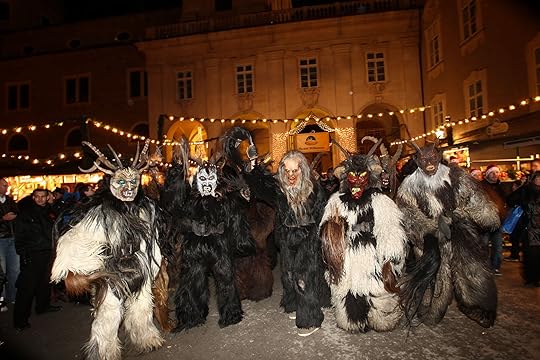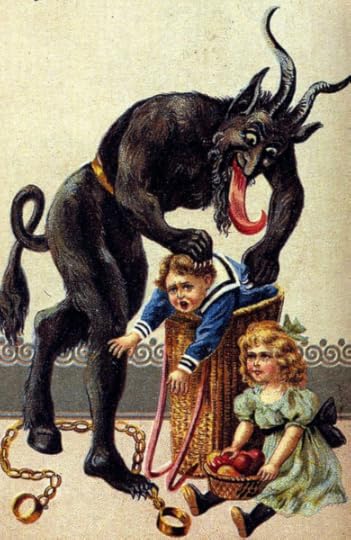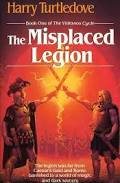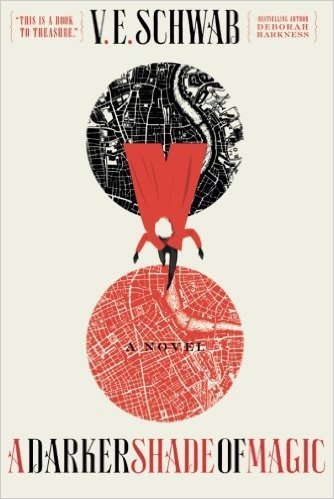Stephen Morris's Blog, page 35
December 12, 2016
Coming: St. Martin’s Fast and Advent

Popular among Western Christians, the advent wreath has 3 purple/red candles and 1 pink that are lit during the 4 weeks before Christmas.
During the 4 weeks before Christmas, most Western Christians (Roman Catholics and Protestants) drape their churches with purple and light candles in a wreath. Children open doors on “advent calendars” to count down the days. They are keeping Advent (the season of “Coming”). Purple is associated with penitential and ascetic exercises; it is also the color of royalty. What “coming” are they preparing for?
Originally, the weeks of Advent were mostly about Christ’s coming as Judge at the End of Days but they also came to be seen as time to prepare for the birth of Christ at Christmas.
In England, especially in the northern counties, there was a custom (now extinct) for poor women to carry around the “Advent images”, two dolls dressed to represent Jesus and the Blessed Virgin Mary. A halfpenny coin was expected from every one to whom these were exhibited and bad luck was thought to menace the household not visited by the doll-bearers before Christmas Eve at the latest.
In Normandy, farmers employed children under twelve to run through the fields and orchards armed with torches, setting fire to bundles of straw, and thus it was believed driving out such vermin as were likely to damage the crops.
In Italy, among other Advent celebrations is the entry into Rome in the last days of Advent of the Calabrian pifferari, or bagpipe players, who play before the shrines of Mary, the mother of Jesus: in Italian tradition, the shepherds played these pipes when they came to the manger at Bethlehem to pay homage to the infant Jesus.
How did all this get organized? In AD 490, Bishop Perpetuus of Tours officially declared Advent a penitential season in the Frankish Church of Western Europe, ordering a fast on three days of every week from November 11 (the feast of St. Martin of Tours) till Christmas. This forty days’ fast, similar to Lent, was originally called Quadragesima Sancti Martini (Forty Days’ Fast of Saint Martin’s) and was primarily about the Last Judgement and the End of Days. In much of Europe, St. Martin’s Day on November 11 is still the beginning of the pre-Christmas season; people eat big dinners of goose, which are very much like dinner on Christmas Day (just as dinner on American Thanksgiving is so very similar to Christmas dinner).
By contrast, the Advent season of the Roman liturgy, developing a century after that of the Frankish Church, was a non-penitential, festive and joyful time of preparation for Christmas. When the Western Church unified the liturgical season, the non-penitential nature of the Roman Advent conflicted with the longer and penitential Gallic Advent. (St. Francis of Assisi expected his followers to keep the St. Martin’s Fast.) By the thirteenth century a compromise was reached, which combined the fasting and penitential character of the Gallic observance with the Mass texts and shorter four-week cycle of the Roman Advent liturgy.
Until recently, it was still common practice for clergy to recall the association of Advent and the Second Coming by preaching about one of the “four last things” on each of the four Sundays of Advent: heaven, hell, death, and judgement.
The post Coming: St. Martin’s Fast and Advent appeared first on Stephen Morris, author.
December 5, 2016
Will you be Meeting the Krampus or Čert?
Traditionally on December 5th and 6th, St. Nicholas walks from house to house in the cities and villages of Alpine and Central Europe to admonish and laud young and old. In the Alpine regions, he is accompanied by a Krampus (an evil creature, a devil of sorts), who is going to punish the bad children and adults on St. Nicholas′ command. For the honest children he normally has little presents. In Prague and the Czech-speaking areas of Central Europe, the čert (a clearly demonic character) accompanies St. Nicholas.
In Come Hell or High Water, both St. Nicholas and his čert appear:
“It was commonly supposed [in 1356] that St. Nicholas, as he made his rounds bestowing gifts on children and the needy, was accompanied by both a tar-covered čert, a pitch-black devil, as well as a bright and glorious andel, an angel of light, who each argued for or against the worthiness of the recipient of the saint’s benefactions. The čert was always ready, at the slightest nod from the saint, to carry away the unworthy beggar or misbehaving child and–throughout the year–parents could always warn their children that they might be carried away by the čert….”
St. Nicholas himself is a Christian figure, the fourth century bishop of Myra. As son of a well-situated family, he started to help poor people who lived in deep poverty. He was supposed to have miraculous vigor and so he became patron of the seamen, children and poor people. (See a previous post about St. Nicholas and his care for the poor here.) In most modern versions of the St. Nicholas story, he is accompanied by a monster or servant (the Dutch describe his assistant as Black Peter) who punishes the bad children while Nicholas himself rewards the well-behaved children.
The figure of the Krampus is based on pre-Christian custom. The Krampusse not only punish the bad children but had the function at one time of driving out the winter devils and blizzard sprites. Originally the custom of the Krampus was spread over all of Austria but was forbidden by the Catholic Church during the Inquisition. It was prohibited by death to masquerade as a devil or an evil creature and so this custom only survived in some remote, inaccessible, regions of the Alps from where it slowly spread back across the western parts of Austria again. Today the Krampusse revels are especially popular in Salzburg. As many times as I have been to Salzburg, I have never been there during Krampusse-time; I would dearly love to be there to see the processions and parades of costumed characters in the streets.

St. Nicholas and the Krampus procession in Salzburg (2010); photo by Charlotte Anne Brady.

Krampus revels at the Salzburg Christmas Market, 2011; photo by Neumayr/MMV 05.12.2011
The post Will you be Meeting the Krampus or Čert? appeared first on Stephen Morris, author.
November 28, 2016
New Top Blog Posts

The new “Most Popular” post knocked aside the previous winner, which had been the Lammas Day post.
It’s always a surprise to me which posts become SO popular. Writers never know what words or stories will strike their readers in a certain way, grabbing them by the lapels and demanding to be read. Of course, as a writer I hope that ALL my words will grab readers attention that way but experience proves otherwise. Some words grab some readers. Other words grab other readers. The important thing is that words and stories each be read and that each reader find their favorites. Often a writer never knows which words or stories grab which readers in particular; people share or trade copies of books and so sales is often a poor indicator of what readers find especially compelling or attractive.
One way of writing that is easy to measure it’s popularity are blog posts. Posts are tracked by the cyber-spirits that dwell in “the Cloud” and it is very difficult to trick these cyber-guardians who stand there with clickers in their hands, tabulating how many people click on links or pause a minute to look at a webpage. “Top Post” is a category that every post wants to inhabit but which only a very few are lucky enough to achieve. My most recent Top Blog post was the post in which I shared my thoughts on From Faith to Fantasy and discussed how having served as a priest has shaped my writing. The previous most popular posts were those about Lammas Day and about Frankincense.
Another post that has been consistently popular, often getting 50+ views per day, is the post about Storm Wolf. Although it has not been read as many times in one day as From Faith to Fantasy or Lammas Day or Frankincense, it has been very popular for several weeks in a row.
More top billing? My appearance on Hannah Kate’s public radio show in Manchester, UK is among the Top 30 downloads of programs on Mixcloud! You can listen to the show–in which I discuss writing, Prague, the Evil Conferences, and more–on Hannah Kate’s page.
You can also hear me pontificate about a cult classic made-for-tv horror film on the newest episode of the Scream Queenz podcast. If you haven’t seen the movie–or saw it years ago and have forgotten details–you can read my post about Crowhaven Farm and click on the link to the movie itself.
And don’t forget the podcast of my 2014 interview with Radio Prague!
The post about Lammas Day on July 29, 2016 surpassed the previous most popular post (Frankincense, on December 7, 2015).
The post New Top Blog Posts appeared first on Stephen Morris, author.
November 21, 2016
The Byzantine World of Videssos
Are you looking for an alternate reality or a parallel universe to step into while traveling for Thanksgiving or dealing with difficult family over the holidays? I cannot recommend the Videssos Cycle by Harry turtledove TOO highly! It is excellent!
In The Misplaced Legion, the first of the books, the Roman tribune Marcus Scaurus held the spell-scribed sword of a Druid priest, and the Celtic chieftain Viridovix held a similar sword, bespelled by a rival Druid sorcerer. At the moment they touched, the two found themselves under a strange night sky where no stars were familiar and where Gaul and Rome were unknown. They were in an outpost of the embattled Empire of Videssos–in a world where magic and dark sorcery would test their skill and courage as no Roman legion had ever been tested before.
Readers who know something of Byzantine history will quickly discover that the world of Videssos is closely modeled on the Byzantine Empire familiar to those of us who inhabit THIS reality. Harry Turtledove, himself a Byzantine historian as well as an award winning sci-fi and fantasy author, uses his knowledge of Byzantium to full advantage. Well known friends and enemies, dogmatic disputes, intricate social hierarchies are all recognizable in Videssos. But you do NOT need to know anything of Byzantium to appreciate the wonders and glory of the world Turtledove has created within the covers of these books.
The Videssos Cycle by Harry Turtledove is a four book series which is now available in two volumes, each volume containing two of the original books. Therefore, the covers are different now as well.
See my post about another Turtledove classic, Thessalonica, here.
The post The Byzantine World of Videssos appeared first on Stephen Morris, author.
November 14, 2016
A Darker Shade of Magic
Have you felt like you stepped into an alternate reality or a parallel universe these last few days? A Darker Shade of Magic is a quick, easy-to-read tale of alternate realties and parallel universes. Author V. E. Schwab is best known for her YA novels as well as the adult novel Vicious which was of one of Publishers Weekly‘s Best Fantasy Books of 2013. If you need something to read on the subway, an enjoyable distraction from the world in which you currently reside, you could do worse than to spend some time with Schwab and her characters.
In A Darker Shade of Magic, we meet Kell. He is one of the last Travelers-magicians with a rare, coveted ability to travel between parallel universes, connected by one magical city.
There’s Grey London, dirty and boring, without any magic, and with one mad king-George III. Red London, where life and magic are revered-and where Kell was raised alongside Rhys Maresh, the rougish heir to a flourishing empire. White London-a place where people fight to control magic, and the magic fights back, draining the city to its very bones. And once upon a time, there was Black London. But no one speaks of that now.
Officially, Kell is the Red Traveler, ambassador of the Maresh empire, carrying the monthly correspondences between the royals of each London. Unofficially, Kell is a smuggler, servicing people willing to pay for even the smallest glimpses of a world they’ll never see. It’s a defiant hobby with dangerous consequences, which Kell is now seeing firsthand.
Fleeing into Grey London, Kell runs into Delilah Bard, a cut-purse with lofty aspirations. She first robs him, then saves him from a deadly enemy, and finally forces Kell to spirit her to another world for a proper adventure.
Now perilous magic is afoot, and treachery lurks at every turn. To save all of the worlds, they’ll first need to stay alive.
The post A Darker Shade of Magic appeared first on Stephen Morris, author.
November 7, 2016
Happy Birthday, Bram!

Bram Stoker, an Irish author-actor-playwright, is best known for his novel Dracula.
Abraham “Bram” Stoker (born November 8, 1847 – died April 20, 1912) was an Irish novelist and short story writer, best known today for his 1897 novel Dracula. During his lifetime, he was better known as personal assistant of actor Henry Irving and business manager of the Lyceum Theatre in London, which Irving owned. (Stoker’s residence and parish church can still be visited in Dublin.)
Although Stoker himself never visited Romania or the Carpathian Mountains, he spent several years researching European folklore and mythological stories of vampires. He also met Ármin Vámbéry, a Hungarian writer and traveler, whose dark stories of the Carpathians may have also contributed to Stoker’s inspiration.
Stoker’s most infamous character, the vampire Dracula, has gone on to appear in many “incarnations” or guises. In the Dresden Files series, Stoker’s novel is said to be a hunter’s manual for the Black Court vampires, now all but extinct as a result. Bela Lugosi played the vampire in both stage and film versions of the story. The new Something in the Blood by David Skal was reviewed in the New York Times at the end of October; it is an examination of where all the sexual energy and tension in the book comes from. One study, Who was Dracula? explores and uncovers the wide range of source material – from folklore and history, to personas including Oscar Wilde and Walt Whitman. There are many versions of The Annotated Dracula and each opens new windows into the world of Stoker and his famous, bloody creation.
The post Happy Birthday, Bram! appeared first on Stephen Morris, author.
October 31, 2016
From Faith to Fantasy: How the Priesthood Shaped My Fiction

Holy Saturday (1991) at St. Mary Magdalen parish in Lampman Chapel at Union Theological Seminary. (photo courtesy of Alexandra Chistyakova LaCombe)
I served as parish priest for a small Eastern Orthodox congregation on the Upper West Side of Manhattan and at Columbia University for many years. I celebrated services, preached sermons, performed marriages and funerals. I counseled the confused and the despairing, taught those with questions, rejoiced with the joyful. I read. I shared what I had discovered on my own journey. Most importantly, I listened. Most people already knew the answers to their own questions; they just needed someone to help them listen to themselves.
Hopefully, that listening and sharing is reflected in my writing. I listen to the characters and help them to discover who they are and what journeys they are on. I share aspects of myself with each of them and they share themselves with me; if I am quiet and listen, I can share not only their joys and frustrations and despair myself but communicate their experience to my readers.
One aspect of Eastern Orthodoxy that is distinct from other styles of Christianity is the ongoing, living voice of Tradition. This is not simply a blind or rigid adherence to the past. As G.K. Chesterton wrote, “Democracy says everyone’s voice counts, even if they are stable hands or cowherds. Tradition says that everyone’s voice counts, even if they are dead. We shall not be governed by the oligarchy of those who simply happen to be alive. Some vote with stones, as in ancient Greece. Others vote with tombstones.” In order to do Orthodox theology in a modern context, we must be in dialogue with the great preachers and thinkers of the 4th-5th-6th centuries as much as we are in dialogue with modern thinkers; when wrestling with issues today, it is probably even more important to be in dialogue with the preachers and thinkers of the formative periods of Orthodox thought and practice than with those who simply happen to be our contemporaries.
My novels are shaped by the folklore, legends, and history of the places where they are set: the Baltic States (Estonia-Latvia-Lithuania), Poland, Bohemia (the modern Czech Republic), Ireland. My characters interact with those authentic pre-modern beliefs and practices, retelling and reshaping them for modern audiences. I introduce characters to each other that might not have met in their original settings but that have stories and experiences to share with each other. By sharing their experiences, they enrich each other and the readers who can eavesdrop on their conversations or thoughts.
Priesthood is primarily a way of being, of bridge-building. In writing, I try to be my truest self and attempt to build bridges between cultures and histories, practices and experiences, characters and readers.
(This essay first appeared as my guest post on Eve Heart’s blog in September 2016.)

Another photo of Holy Saturday 1991. (photo courtesy of Alexandra Chistyakova LaCombe)
The post From Faith to Fantasy: How the Priesthood Shaped My Fiction appeared first on Stephen Morris, author.
October 24, 2016
Kindle Countdown to Hallowe’en!

HAPPY HALLOWE’EN! TRICK OR TREAT!
Both Come Hell or High Water, Part 2: RISING and STORM WOLF are participating in the Kindle Countdown discount program on October 27-31, just in time to get the perfect reading for Hallowe’en OR Samhain on your Kindle or Kindle app! What a treat!
Both books go on sale October 27 and the price gradually rises until midnight on October 31, when both books resume their usual Kindle prices.
Remember that sales of Come Hell or High Water, Part 2: RISING help support the American Red Cross as part of the #VampireBooks4Blood program as well!
See the entire Come Hell or High Water trilogy here.

Read about the history of jack o’ lanterns at http://www.history.com/topics/hallowe...
The post Kindle Countdown to Hallowe’en! appeared first on Stephen Morris, author.
October 18, 2016
Bad Moon Rising Interview

Storm Wolf is infused with carefully researched authentic medieval and Renaissance magical practices and folklore, some taken from records of actual witchcraft and werewolf trials, as well as folk rituals.
What’s the first story you ever wrote?
I started telling stories when I was in grade school and began to write them down shortly thereafter. I wrote my first books – one was a story involving time travel using a “timeract,” similar to the tesseract from Wrinkle in Time (by Madeline L’Engle) and another with characters similar to those on Bewitched, my favorite television series — in middle school. I wrote an epic poem about the creation and fall of the angels similar to Paradise Lost in high school.
Which fictional character would you most like to meet and have a drink with?
The Wicked Witch of the West! From the Wizard of Oz movie, not the book! Hands down! Or, failing her then Margaret Hamilton (who played the role). That would be my dream come true! (*swoon*)
In the spirit of Halloween, what scares you?
I am squeamish and grossed out by blood-and- guts so I always look away during doctor shows or horror movies when they show close-ups of medical procedures or vicious attacks by monsters—Ugh! My peripheral vision isn’t always very good and so I am quite startled when someone just suddenly appears beside me whose approach I was unaware of. But I am truly scared of walking down a dark street at night when I am the only person on the block that I can see, or walking under scaffolding at night, where the shadows are even darker and deeper than the rest of the street. I will do almost anything to take another route or walk down the middle of the road to avoid those dark shadows!
Favorite hero and villain in a book/movie?
I first became interested in the occult and magic when I was very VERY young and saw The Wizard of Oz on television for the first and second times. The first time, my mom says I was terrified of the Wicked Witch’s appearance in Munchkin Land amidst smoke and flames and ran straight to bed! (I must have been 5 years old or so.) The next year I began watching the movie again and made myself stick with it past the appearance of the Witch and after that — I was hooked!
The Wicked Witch of the West became my favorite character because not only is she the most interesting but she is the only one who wields any real power in the movie. She became my idol for years and years! (When a major storm recently struck Manhattan, I made a comment on FB about the wind picking up our house and depositing it atop someone wearing peppermint stripped stockings and glittering red shoes and my cousin responded: ‘You’ve been chasing those shoes for YEARS!’ LoL!
My favorite hero? That character is much harder to identify because the Bad Guys and Villains are generally so much more interesting! I think Dallben, the enchanter in the Prydain Chronicles by Lloyd Alexander, is certainly one of my favorites. He is quiet, unassuming, and easily underestimated yet is clearly the mover-and- shaker behind the story, much as Merlin is in the King Arthur legends. I always thought that—given the choice and the opportunity—I would rather be Merlin than Arthur because Merlin may not be front-and-center but he is the one who directs all the action from offstage.
What do you consider the hardest part of writing?
I think getting the first half of any chapter down on paper is like scrabbling up a wall by your fingernails or struggling up a steep mountainside. Then, you crest the mountain’s ridge or reach the top of the wall and writing the rest of the chapter is like sledding down the other side of the mountain. I reach a critical mass or something that tips the weight and – “WHOOSH!” – down we go, the words flying out of my fingertips and onto the page. But then, what a struggle to begin the next chapter again!
What are you working on now?
I am currently working on both a nonfiction project and a novel. The novel is Earth to Earth, Ashes to Ashes and tells the story of Elizabeth, a young woman in late 1600s or early 1700s Waterford, Ireland who is forced to marry a wealthy, English landlord who beats her to death. But Elizabeth rises from her grave as the dearg-due (“red blood sucker”) who seduces and kills men. She is indestructible, immune to sunlight or garlic and can only be pinned back under the earth if a small cairn or tower of stones is erected on her grave.
(This interview first appeared on October 12, 2016 on the Bad Moon Rising site.)
The post Bad Moon Rising Interview appeared first on Stephen Morris, author.
October 11, 2016
Subway Magic

Subway tunnels are prime locations for magical activities requiring darkness — and grit.

NYC subways in the 1970s and early 1980s were a very different experience from what they are today.
Subways are a fact of life in New York. More than a fact of life, in fact. They are one of the defining characteristics of life in New York. They get us to work and they get us back home. They get us to the movies and to restaurants. They get us from the Bronx to the Battery and to Coney Island or Flushing. No one can say they’ve truly visited New York or had an authentic New York experience without riding the subway.
Subways feature in books about New York, of course. One great book about vampires on the NYC subways during the gritty days of the late 1970s or early 1980s is Light at the End. Another more recent vampire novel set on the subways is The Lesser Dead. (A wonderful guide to vampire literature of all sorts is The Monster with a Thousand Faces: Guises of the Vampire in Myth and Literature which I highly recommend as well.)
Subways tunnels are dark and dirty, prime sites ready for wicked magic and evil magic-doers: The Night Tourist opens doors to the world of the dead. Subways also take us to the East Village and other neighborhoods where occult supply shops like Enchantments can be found if you need a new Tarot deck, appropriate herbs and spices, or any other magical supplies.
Wouldn’t it be even more magical if everyone remembered a little etiquette while riding the subway?
Just as everyone-including men-should sit on the subway with their knees together, it is also true that everyone-including women-should keep both feet on the floor rather than crossing their knees and sticking one foot out into the aisle halfway across the space allotted for people to stand! ARGH!
The post Subway Magic appeared first on Stephen Morris, author.







